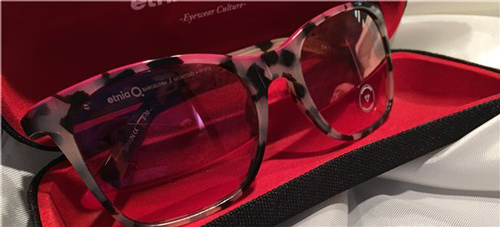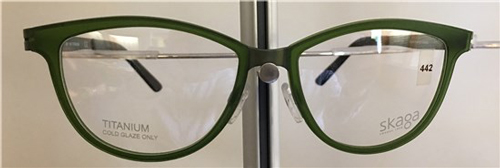This article is reprinted with kind permission from Review of Optometric Business.
 SYNOPSIS
SYNOPSIS
A three-tier frame pricing system simplifies staff presentations in the optical. It also lets your patients spend freely in their comfort zone.
ACTION POINTS
COMPETE EFFECTIVELY. Price to be be both competitive and profitable. Can’t base system on comparison alone.
SIMPLIFY FRAME PRICING. Set three tiers of pricing. It’s simple to inventory, clear for your staff to present, and provides clarity and comfort to your patients.
RESEARCH COMPETITION. Have one of your staff shop around locally and collect pricing on various frame lines to determine the mark-ups of other opticals in your area.
We have adopted a three-tiered frame pricing strategy and found it effective: simple to inventory and present to patients. And it offers comfort and clarity for our patients, who find their price point category and shop there.
A three-tiered system benefits the patient because it communicates to them that we have something for every budget, and that we are not going to hard sell, but educate. We find that many patients get the higher-end product with their managed vision plan, and then may get a second pair, or come back later for the lower-end frames and lenses because they are aware of the range of pricing. It also benefits the patient to have tiers because they can compartmentalize the differences in prices of the frames. We don’t want the shopping experience to overwhelm them, so every frame fits in one of three tiers.
I have experience pricing frames. While in optometry school I worked as an optician and managed a 1,500-frame board. Along with the guidance of my wife, who has worked as a frame sales rep, we have created a practice that is keenly aware of optical management, including how frames are priced and presented to patients.
We utilize 25-30 different brands of frames on the board. We have two offices, and our frames vary in each location to give an overall selection that allows for a high percentage of individuals to purchase glasses and not be wanting to go someplace else due to lack of selection. We offer approximately 750 frames at each location.
We look at the local market and utilize our business sense to price frames competitively and profitably. Unlike other retailers, opticals in OD offices have to factor in how the managed vision plans will compensate us and cover patients when a patient purchases frames.
We price match apples for apples, and don’t do sales. Managed vision plans already cut profits, so, in a way, all our products are already on sale. We use a formula that assumes we get all our profits taken off the top side, so we have to make our money through the difference between the wholesale list and our actual cost. This breaks down to tier pricing and delivery as this article outlines. For the low-end tier, we profit the difference between actual cost and wholesale, for the middle tier frame we net the difference between actual cost and wholesale + $10-$80, and then, for the high-end tier frame, we will make the difference actual cost and whole sale + $100.
Our lowest-cost frames will be in our package pricing of SV + AR + Poly + Frame for $99. The frame is no charge to the patient when bought within this pricing structure. The highest-end frames in our optical price out at about $450.



Three frames from Dr. Fleming’s optical. It’s important to know the demographics you are selling to, including the styles and price range of the majority of patients, says Dr. Fleming, and also to simplify the pricing system to make shopping and decision-making easy.
RESEARCH COMPETITION TO GET SENSE OF LOCAL MARKET
Have one of your staff shop around locally, and collect pricing on various frame lines, so you can quickly determine the mark-up of other opticals in your area. As long as you are in the ballpark, +/- $15, your practice should not be losing patients to pricing.
There are suggested manufacturer’s pricing on many of the frames, but we tend to ignore that, and have transitioned to a two-tier mark-up system. All frames are marked up by a multiple by one-of-two multiples, depending on the base frame price in Frames Data. This also allows our optical team to easily price frames within our practice management software since there is a multiple field that can be loaded.
I don’t worry too much of private practice competitors. There are many other good private practices in my city that do a great job of taking care of patients, and we have found them to be very similar in pricing of frames. What I have my optical keep an eye on is the large commercial establishments.
I view competition as retail optometry because Eyemed and VSP have made it through marketing a blurred line from private practice and commercial when it comes to glasses purchase. Since Eyemed is now the number one carrier of managed vision plans in our area it is very common that our line of frames is similar to commercial establishments.
Patients want the names that commercial companies carry. This evolution has slowly been going on, but now seems to be the norm. Ten years ago this evolution was only hitting big metropolitan areas, but now it is in the heartland and as business owners we must be aware of this and work in this environment. For example, if you don’t offer Oakley, patients will walk with their prescriptions to go find Oakley. Ask any OD that doesn’t carry the name.
There are two questions we ask ourselves: Are we offering frame lines that large commercial retailers carry, and, if so, are our prices relatively competitive with them?
CONSIDER YOUR PRACTICE’S DEMOGRAPHICS
We serve many blue collar workers in our city. They tend to want a good quality value-driven pair of glasses. This does not mean that patients do not look for the higher-end brand names, but the majority of our patients are value driven, keeping quality in mind over the name on the frame. We do sell many of the higher-end frames, but relative to opticals located in other parts of the city, probably a lower proportion of high-end frames. Most of our frames sold price out from $150 to $250.
DETERMINE HOW (IF AT ALL) TO MARK PRICING
We use Letratag, which is a small transparent sticker that goes on the lens and has the price tag on it. This allows for patients to try on frames without an attachment on the temple that gets in the way. Patients should know the price of frames when they are looking around.
TRAIN STAFF HOW TO PRESENT PRICING
We train our staff to present frames based on our three-tiered pricing system. Many of our patients have some form of a managed vision benefit. Before discussing the benefit, our staff are trained to walk each patient through the three tiers of frames, including the benefits of each tier, and the value included in the pricing. This allows for patients to be fully educated about why they would want to spend more on frames than just what their managed plan covers. It usually works well because patients tend to buy the least expensive frame if they do not understand the value of investing in better quality frames.
We conduct training “camps” that include role-playing of how staff can best have this discussion with patients.
DON’T PREJUDGE PATIENT BUYING POWER
A mistake our practice has made in the past, and continues to make on occasion, is thinking that we know what the patient wants. The book, “Blink,” by Malcom Gladwell, illustrates the mistake we used to frequently make. At first “blink” we make judgments about our patients that impact how we interact with them. We allow our subconscious, snap judgments of people to tailor the way we present frames and ophthalmic lenses to patients.
We should assume that every patient wants to be aware of all the frame options available in our office, from inexpensive to high end.
Chad Fleming, OD, FAAO, is a partner with Wichita Optometry, P. A. in Wichita, Kan. To contact: [email protected]












